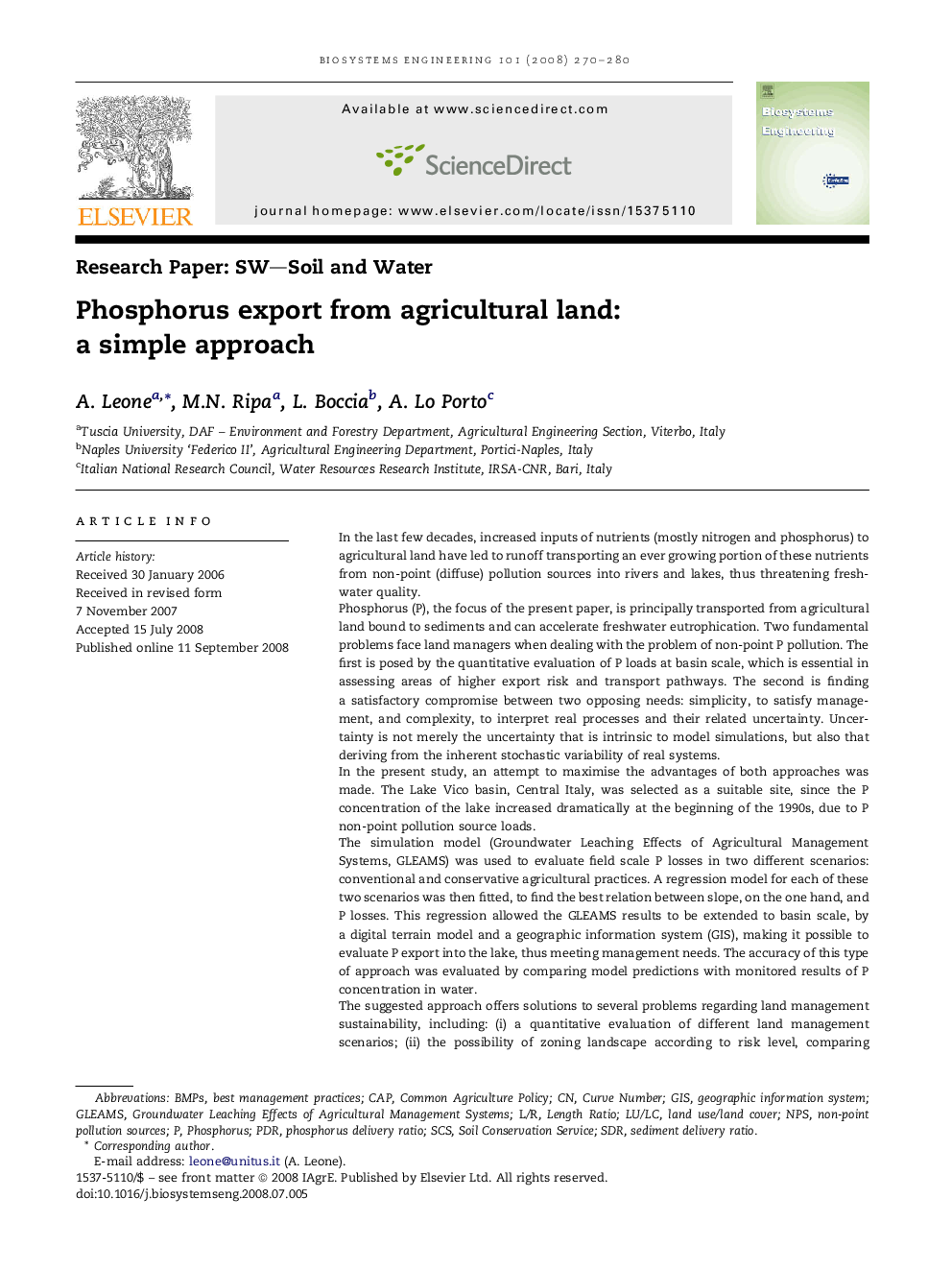| کد مقاله | کد نشریه | سال انتشار | مقاله انگلیسی | نسخه تمام متن |
|---|---|---|---|---|
| 1712014 | 1013113 | 2008 | 11 صفحه PDF | دانلود رایگان |

In the last few decades, increased inputs of nutrients (mostly nitrogen and phosphorus) to agricultural land have led to runoff transporting an ever growing portion of these nutrients from non-point (diffuse) pollution sources into rivers and lakes, thus threatening freshwater quality.Phosphorus (P), the focus of the present paper, is principally transported from agricultural land bound to sediments and can accelerate freshwater eutrophication. Two fundamental problems face land managers when dealing with the problem of non-point P pollution. The first is posed by the quantitative evaluation of P loads at basin scale, which is essential in assessing areas of higher export risk and transport pathways. The second is finding a satisfactory compromise between two opposing needs: simplicity, to satisfy management, and complexity, to interpret real processes and their related uncertainty. Uncertainty is not merely the uncertainty that is intrinsic to model simulations, but also that deriving from the inherent stochastic variability of real systems.In the present study, an attempt to maximise the advantages of both approaches was made. The Lake Vico basin, Central Italy, was selected as a suitable site, since the P concentration of the lake increased dramatically at the beginning of the 1990s, due to P non-point pollution source loads.The simulation model (Groundwater Leaching Effects of Agricultural Management Systems, GLEAMS) was used to evaluate field scale P losses in two different scenarios: conventional and conservative agricultural practices. A regression model for each of these two scenarios was then fitted, to find the best relation between slope, on the one hand, and P losses. This regression allowed the GLEAMS results to be extended to basin scale, by a digital terrain model and a geographic information system (GIS), making it possible to evaluate P export into the lake, thus meeting management needs. The accuracy of this type of approach was evaluated by comparing model predictions with monitored results of P concentration in water.The suggested approach offers solutions to several problems regarding land management sustainability, including: (i) a quantitative evaluation of different land management scenarios; (ii) the possibility of zoning landscape according to risk level, comparing different scenarios and related environmental efficiency; (iii) an integrated evaluation of land cover, in terms of its impact on freshwater ecological status and the long-term water body condition, as a consequence of land use.
Journal: Biosystems Engineering - Volume 101, Issue 2, October 2008, Pages 270–280